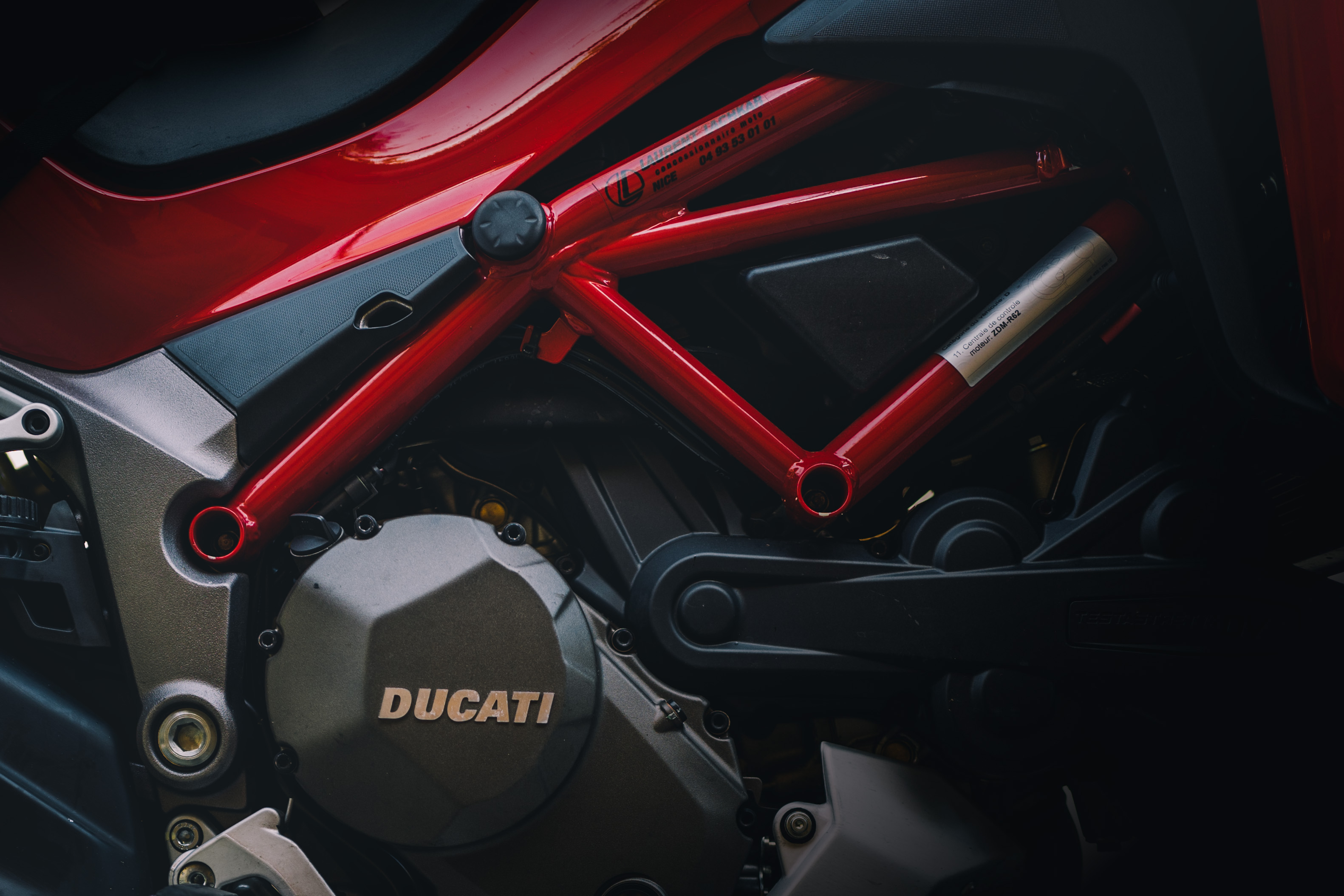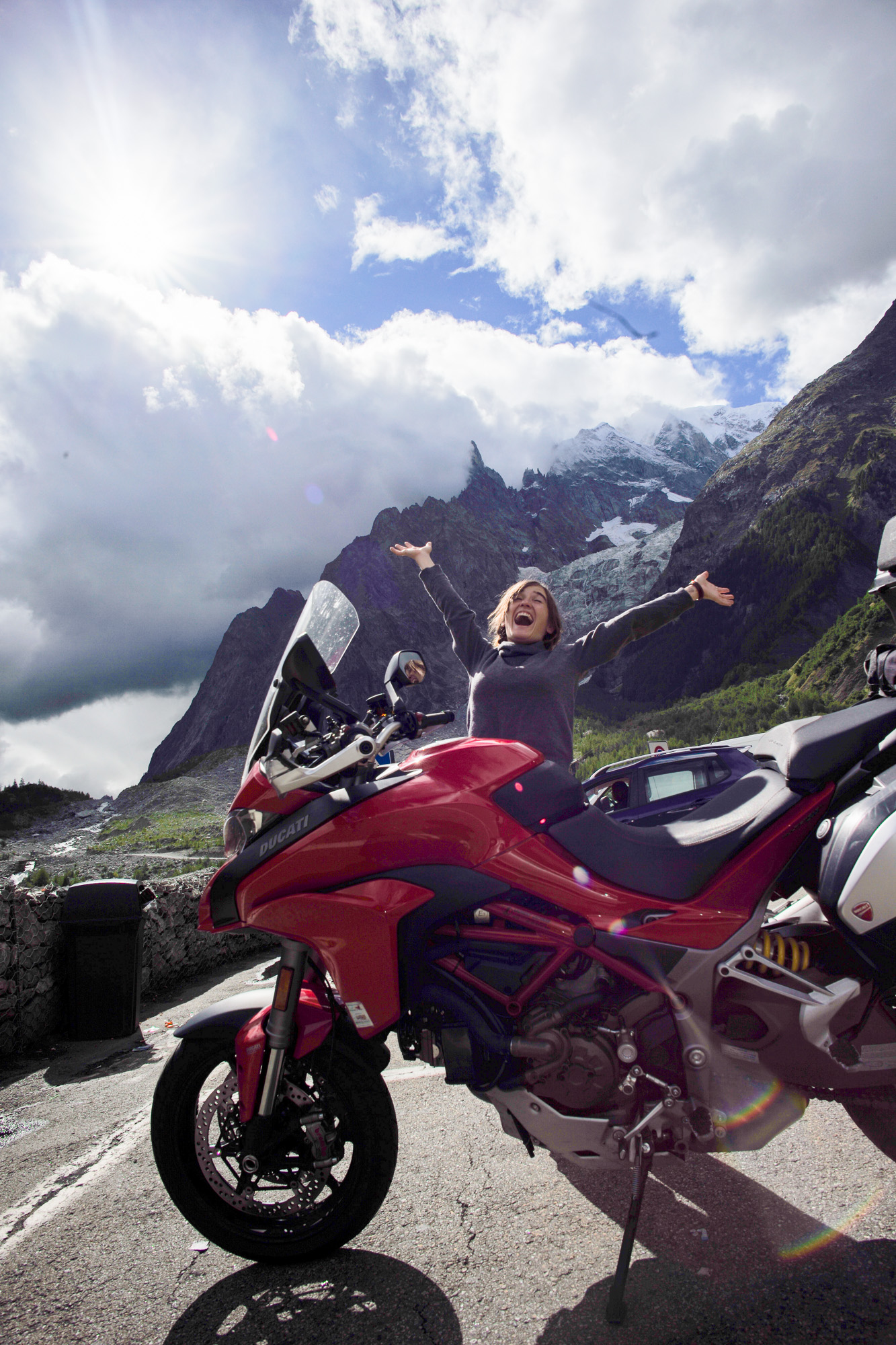I must admit, I have always been attracted to Ducati bikes. My first bike in the US was a 1997 Ducati Monster 750, and its character, sound and good looks are things I still love today. I rode a Ducati GT1000 to the Arctic last year, but like my Monster of old it was a street bike, and not a touring bike per sé. I’d be lying if I wasn’t interested in how Ducati’s flagship touring bike would hold up on a solid long road trip. Can Ducati make a true touring bike that holds it own, without losing what makes a Ducati so damn fun and exciting to ride?
I was lucky enough to get the opportunity to ride Ducati’s latest and greatest bike — the 2015 Multistrada 1200S — for all of August through Europe, riding through five countries and thousands of kilometers to answer this question once and for all.
The basics
Staying true to its brand and formula, the Multistrada is powered by a 90° L-twin dual-spark engine shrouded in bright red (or optionally white) plastics and aggressive styling. Since a while back, Multistradas are liquid cooled, but riding it you can still feel some serious heat coming from the top cylinder. It’s a hot-blooded, red racehorse of a bike that just happens to have all the requisite farkles for comfortable touring.
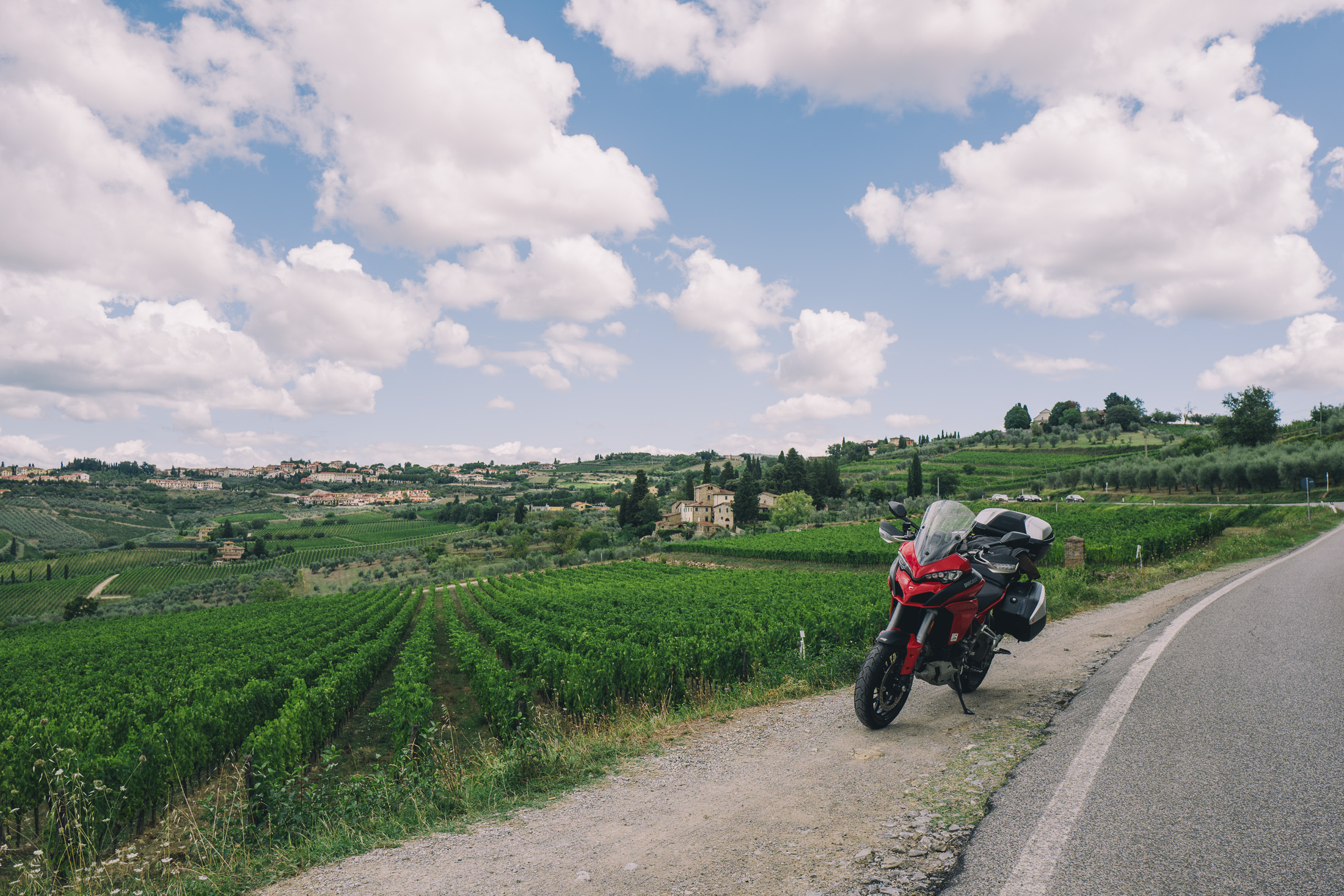
Design
At first glance, the new 2015 Multistrada is visually quite similar to the previous model. There’s a few areas where the aesthetics have improved; the ‘beak’ is a bit downplayed, some lines are smoother and more continuous. The biggest changes are apparent to the rider; the new, much improved instrument cluster and handlebar controls and the engine between your legs.
The Multistrada seems to have people split on its design: some truly love it, others seem to find it offensive.
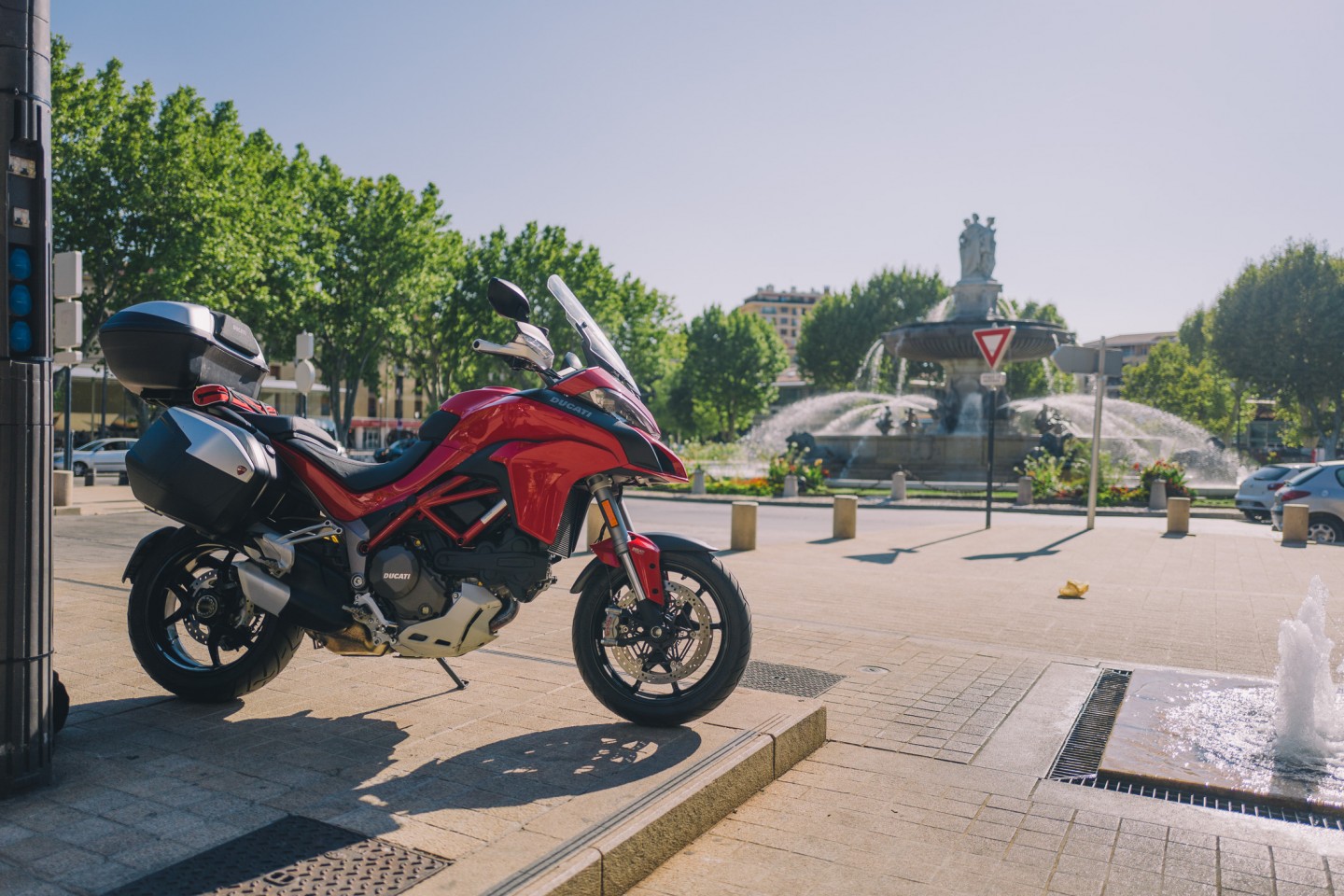
No matter which camp you are in, it certainly looks modern — and strikes a fine balance between the aggressive curves of its superbike sister, the Ducati 1199 Panigale and the hooligan-oriented upright-posture Hypermotard, all the while adding comfortable touring features. In Europe I received a lot of compliments on it from all sorts of motorcyclists. If anything, it looks fierce.
A highly appreciated change Ducati made was the simplification of the cluster and its controls. But the changes to the main instruments don’t just end with the appearance of the cluster; the actual main display featuring your tachometer, speedometer and more basic information moved from traditional LCD technology to a true transflective LCD. Transflective LCD technology is fairly new, and has a serious advantage on motorcycles: it is incredibly bright in sunlight. I found it an incredibly nice experience, as a motorcycle rider that has always preferred traditional gauges over digital displays.
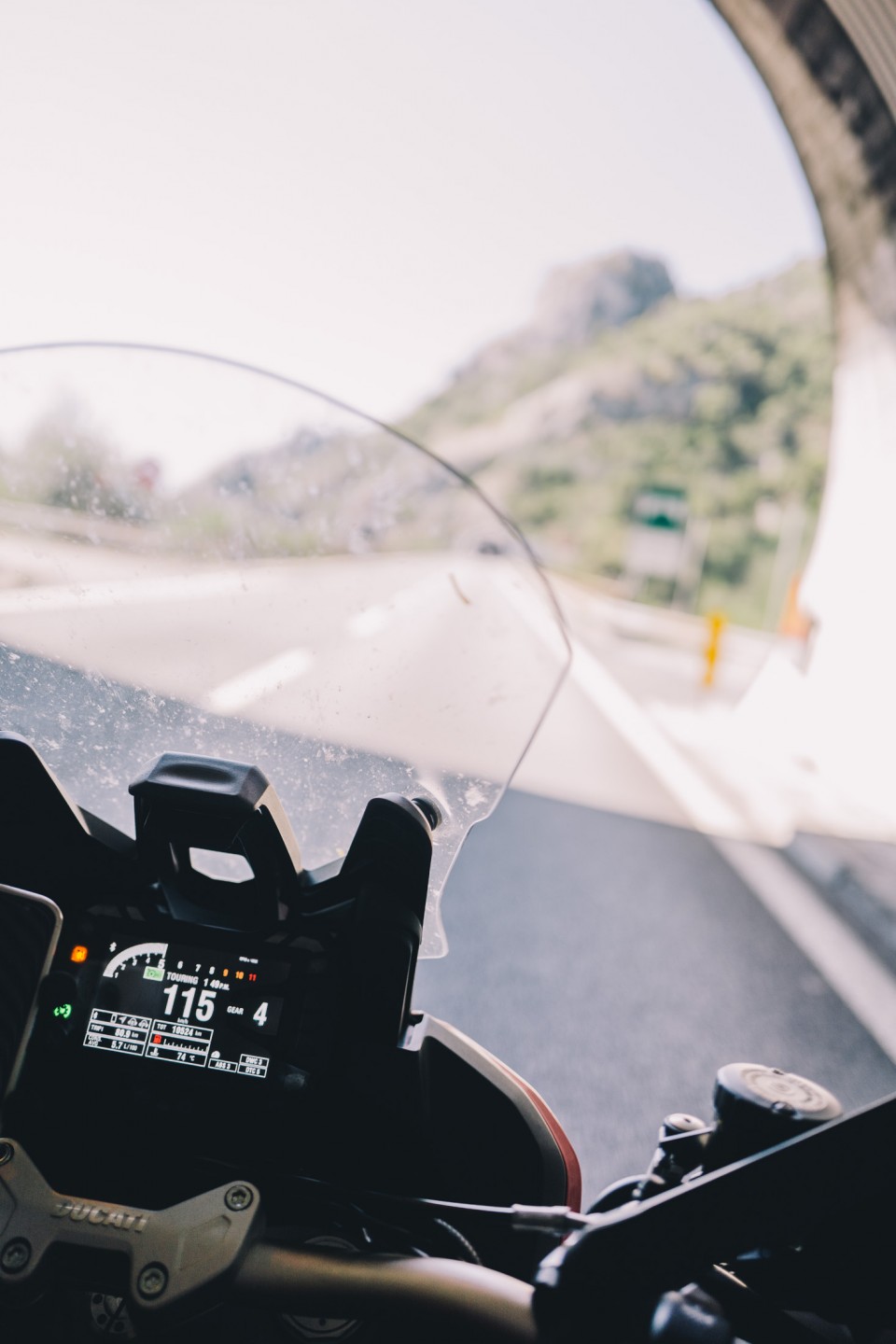
The cleverness of the instruments don’t end there; if I rode through a tunnel or the sun set, the display inverted its color scheme and became dark, making sure I wasn’t getting blinded by an all-white LCD screen. The cluster also has accommodations for media controls as well as GPS from a Bluetooth-connected phone, but sadly at the time of riding the ‘Ducati Link’ app that enables such functionality wasn’t yet available.
All in all, it added up to one of the best instrument displays I’ve seen on any bike. A bit of a shame is that Ducati has deemed it an extra: the entry-level, less-farkled non-S Multistrada 1200 has a much more basic greyscale LCD instead.
Performance
Coming from the 2014 Multistrada 1200S, the engine has been slightly upgraded: there’s 10 more claimed horsepower on the bike, which is a nice addition in a bike with little to no noticeable weight change.
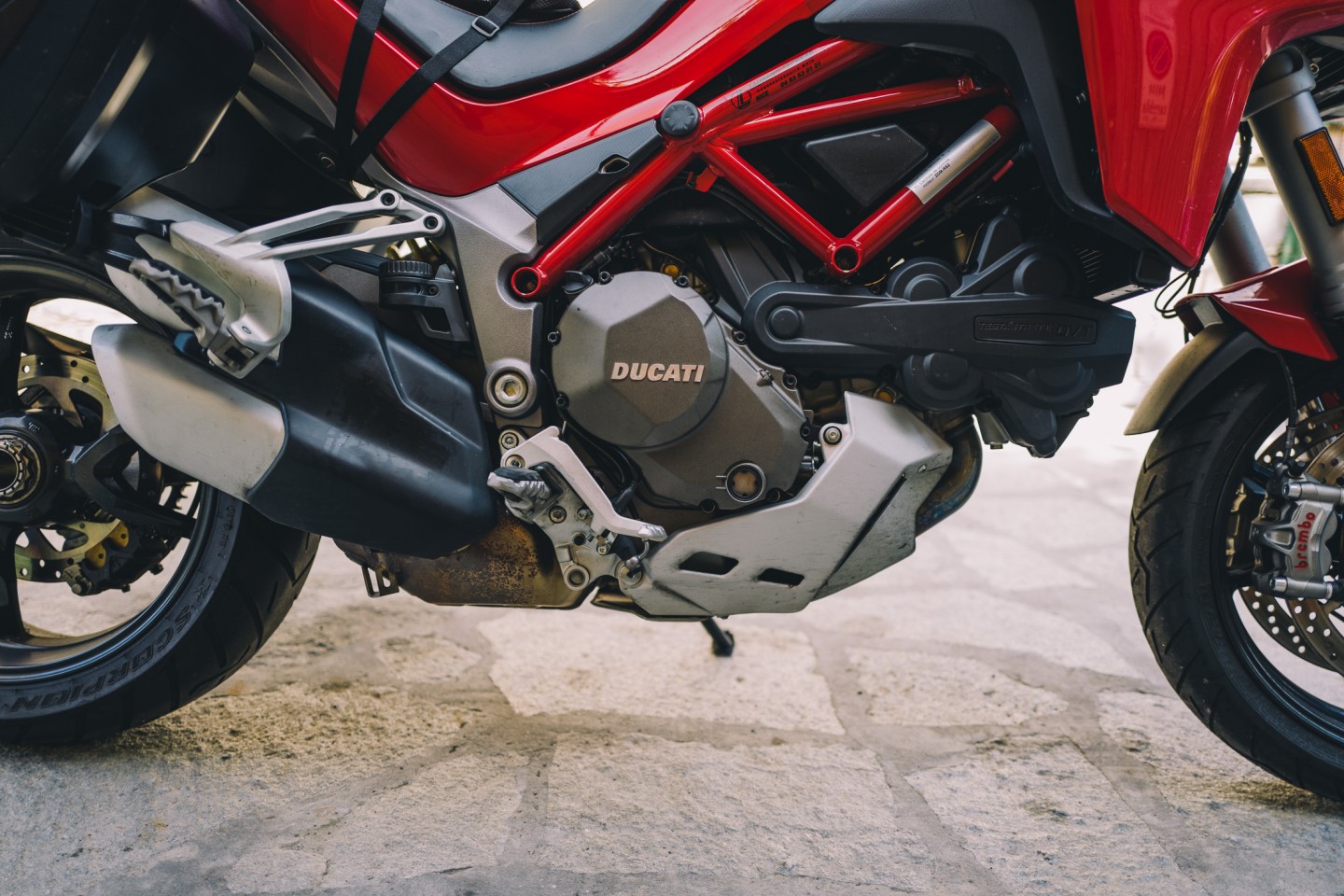
A first for Ducati is the introduction of DVT, or ‘Desmodromic Variable Timing’. While variable valve timing has been a thing in cars for a while, Ducati has debuted it in its Multistrada — arguably to improve its engine character and performance on the lower end of the power band in first gear, while also improving the fuel economy. Bundled with the most advanced engine Ducati has put out yet are a host of electronic systems: an Intertial Measurement Unit (IMU) coupled with ABS, which can adjust braking power and application even while the bike is leaned over while maintaing stability.
Things get even crazier: the IMU can send data to the on-board computer so that as you lean the bike, the headlights automatically light up more of the turn you are turning into. It’s kind of insane when you experience it, and yet incredibly easy to get used to. The lights themselves, regardless of where they were aiming, seemed good at their job. If anything, a bit too good: by EU spec, seemed rather bright and aimed a bit high; I often got flashed by oncoming cars at night, which made me double-check if my high beam was on. (it wasn’t)
Throttle is ‘ride by wire’, which means that almost every aspect of the engine character and throttle response can be controlled by the computer. This enables the four riding modes, but also the sub-settings of each which you can tweak if you’d be so inclined. Features include Ducati Wheelie Control, Traction Control and about a dozen more settings. I played a bit with the basic settings, but found myself often staying with the ‘Touring’ setting which strikes a good balance of control, performance and comfort.
I did have moments, however, where it felt a bit like the ‘ride by wire’ created a bit of a disconnect between my inputs and what the bike was doing. It was a bit jarring, and it’s hard to put my finger on exactly when it kicked in, but perhaps I am simply too used to a Ducati being a bit aggressive and raw in its performance. The Multistrada felt — at times — a little too smoothed, as if the computer tried to average my inputs rather that respond to them. Something that could be fixed with adjustments of the many settings on board, possibly — but I found it apparent even in the supposedly untamed ‘Sport’ setting.
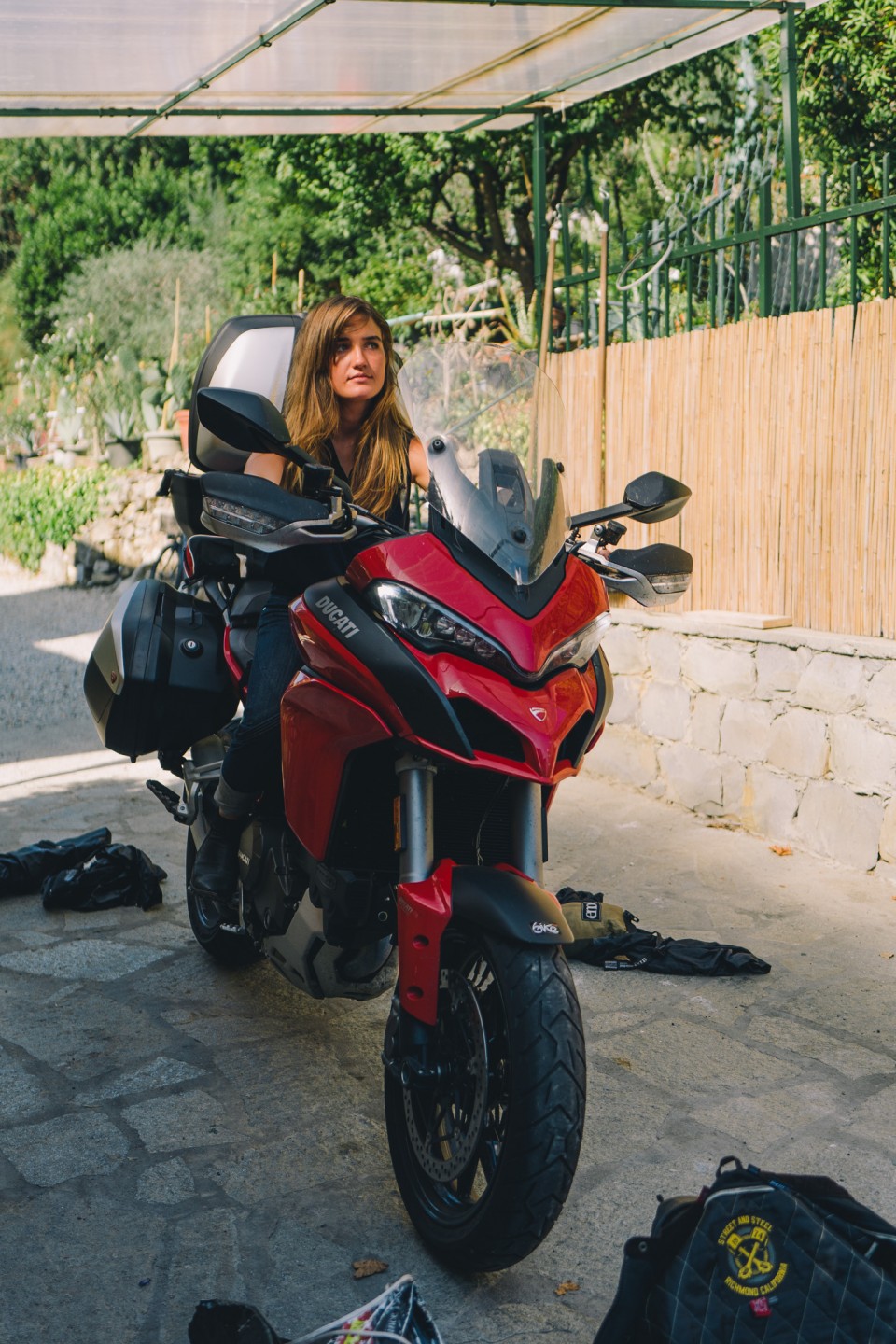
The bike is tall, as many bikes in its class, but thanks to its narrow, sculpted seat which is practically carved into the shape of the bike, it is easy to reach the ground. It’s certainly shorter than the comparable Triumph Tiger or BMW GS bikes in its class, in part thanks to the seating position putting you ‘in’ the bike rather than ‘on’ it. It makes for a well-planted position that lends itself well for aggressive cornering as well.
Touring
While the views expressed in this review are exclusively my own, the touring comfort aspect was also tested by my girlfriend in Europe who rode on the back. Pillion provisions are exceptional with the factory luggage option: the top hard case has a little back rest for your passenger, and the general geometry of the bike is such that your passenger will have a ton of space behind you to sit and move around.
After about three weeks of riding around Europe, we both reached the judgment that the Multistrada was easily the most comfortable bike we’d toured on. In its ‘Touring’ riding mode with full adaptive electronic suspension and the stock seat, it was no issue riding on it all day long. If you feel like it, you can even adjust the height of the seat.

The seat may be a bit secondary, though: it became instantly obvious how much comfort the suspension provides when I turned off the ‘Touring’ mode and switched to ‘Sport’ for a day. My butt was seriously hurting – I almost felt like it was bruised. Back to ‘Touring’ and the DSS (Ducati Skyhook Suspension) adaptive suspension made it nice and comfy again and my behind took the subsequent kilometers in stride.
Stock, the bike comes with a windscreen and hand-guards; the handguards, like the Ducati Hypermotard, have integrated turn signals which clean up the bike’s appearance nicely.

Other niceties are the one-hand adjustable windscreen and cruise control. While these are pretty standard features on a serious touring bikes, the implementation was superb. Compared to the equivalent BMW 1200GS — possibly the current highest-selling touring bike — the cruise control and windscreen controls were simpler and easier to use.

As a cherry on top of the almost-Science Fiction levels of technology in the new Multistrada, the bike comes complete with a keyless ignition system. There’s a key in case you need it, but much like modern cars you can just keep the key in your pocket and hit the starter to take off. It even automatically locks when you walk a certain distance away from the bike.
Luggage
A touring bike isn’t a true touring bike without solid luggage options. In the past, Ducati offered a standard touring kit with hard panniers and this year’s model is no different. The case set is made by Givi and consists of a hard top case and side panniers.
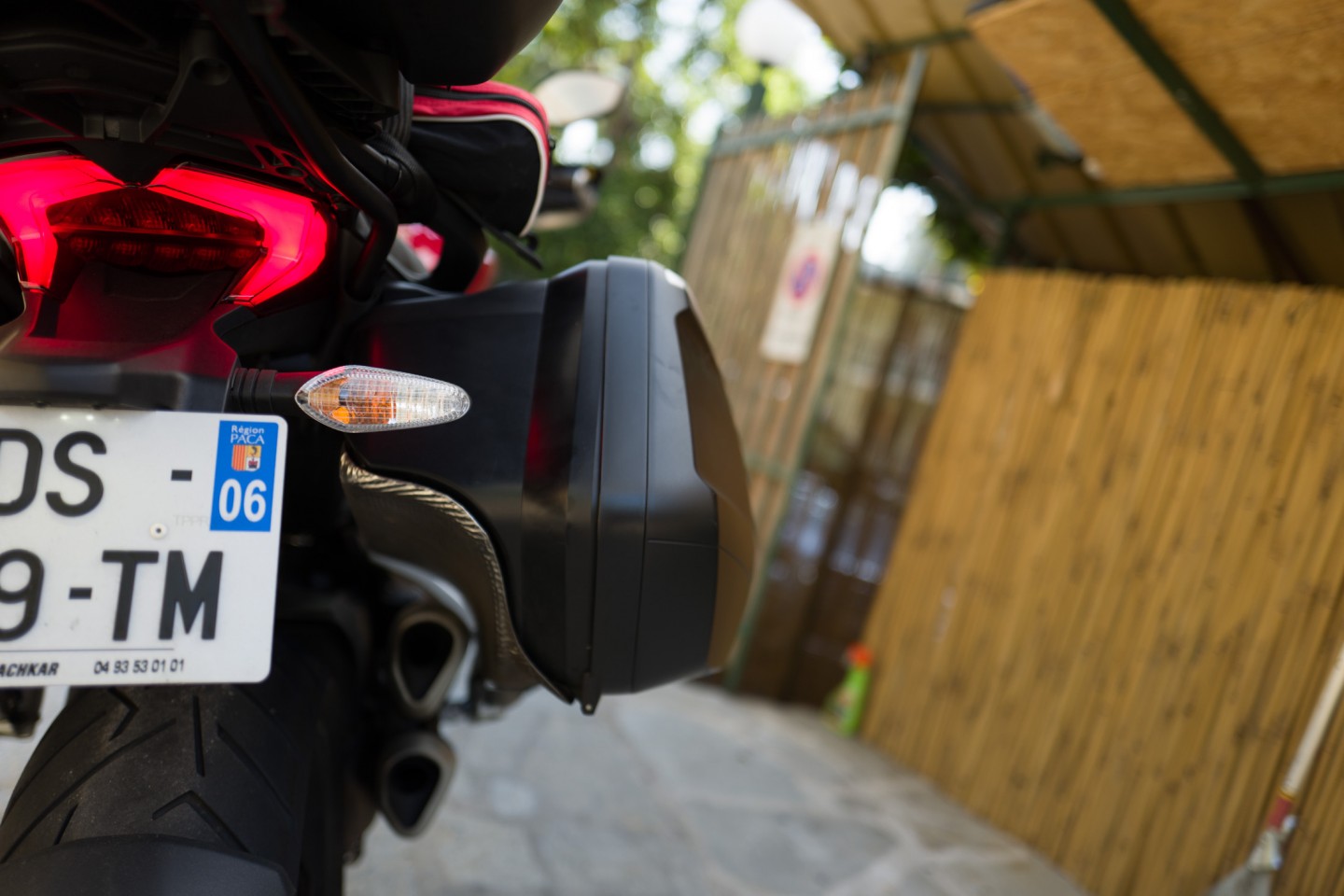
While I am told it has been improved from the last year’s set, the Givi cases still fall short in several places. The side cases are side-loading, which means you have to open them up with the lid facing outward instead of being able to load them from the top. This usually results in most of your stuff falling out, even if you use the internal stowing straps. While likely a limitation of the ‘aerodynamic’ profile of the panniers, it’s just a deeply impractical design for more than minimal touring.
The aerodynamics of the cases is nice, but the general aesthetic is reminiscent of the hard luggage often seen on scooters, and clashes with the overall aggressive styling of the bike.
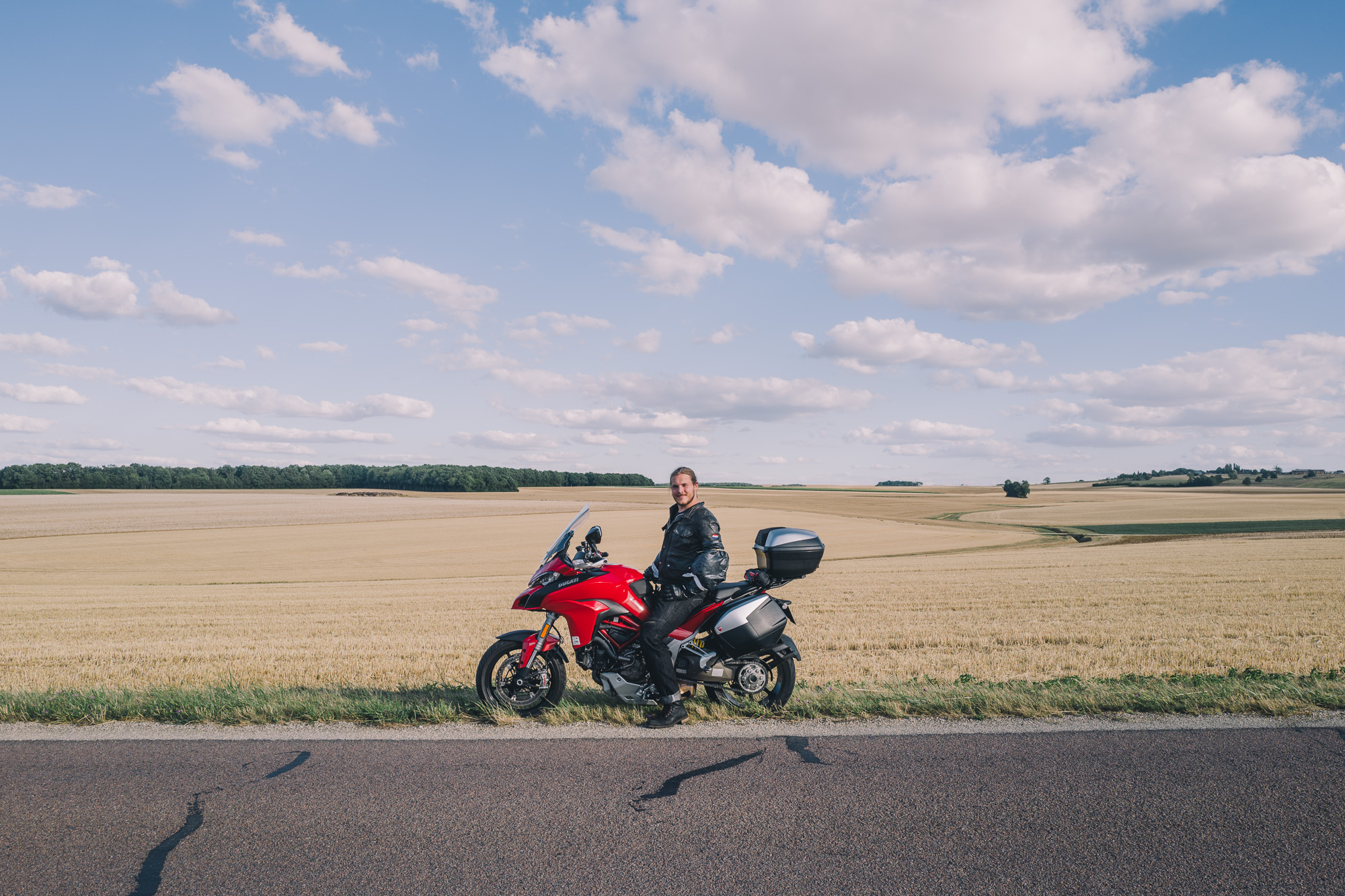
Fortunately there’s plenty of aftermarket luggage options available by now — though, do check fitment, as luggage mounting points have changed from the 2014 to the 2015 Multistradas.
Conclusion
Modern sport-touring bikes have departed from the mid-90s notion of being heavy and bulky thanks to Ducati’s practical reinvention of the category with its aggressively road-oriented Multistrada. With the 2015 1200S model, it adds enough features, technology and comforts to make BMW owners swoon — and the Bavarian company too, perhaps, as it recently entered the market by introducing its S1000-XR Multistrada-lookalike. However, Ducati shows its future vision in the new 2015 1200S: it is a solid update to an already impressive bike.
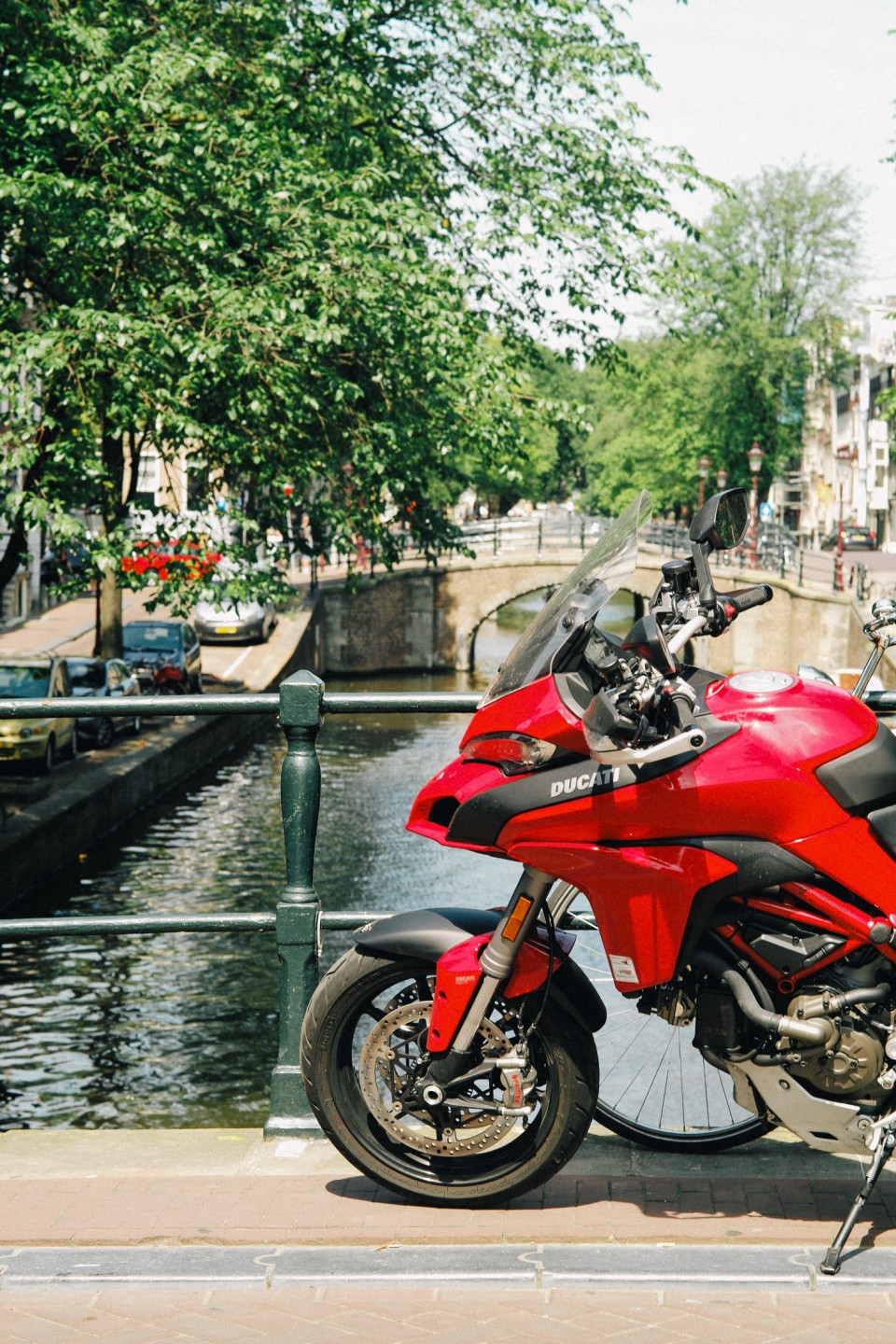
Whether or not the Multistrada is for you depends on what you want out of it. If you want the sheer, raw power and pleasure of a Ducati that is unforgiving, demanding and forces you to become a better rider, it is possible to work your way through the complexities of the Multistrada and peel down the layers of technology to reveal that yes, indeed, there is a high-powered race bike hidden in there.
But you shouldn’t — what this bike is perfect for is those people who want to take their time exploring well-paved parts of the world while still feeling like they are riding a sporty, aggressive bike that corners fantastically.
Where the BMW 1200GS is the motorcycle equivalent of a pocket knife, the Multistrada is designed for a specific purpose, much like a chef’s knife: touring the highway and carving the civilized, tarmac mountain and coast roads of Italy and beyond, where it will never fail to give you a comically big grin all day long.

